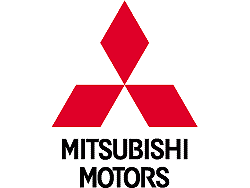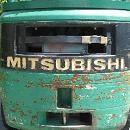 |
Forum Oficjalnego Klubu Mitsubishi - MitsuManiaki
|
|
| Ogłoszenie |

W myśl ustawy RODO, akceptując regulamin wyrażasz zgodę na gromadzenie i przetwarzanie swoich danych osobowych w celach związanych z przyznaniem dostępu do forum / wstąpieniem do klubu.
Administratorem danych jest Oficjalny Klub Mitsubishi - MitsuManiaki
Jeśli nie akceptujesz powyższych informacji, prosimy o kontakt z Administracją w celu usunięcia konta.
|
|
outlander 4x4 system, najlepszy w klasie? |
| Autor |
Wiadomość |
PiotrKw 
Forumowicz
Auto: nie Pajero3.2 Touareg3.0 Q74.2
Kraj/Country: Polska
Pomógł: 25 razy
Dołączył: 18 Wrz 2010
Posty: 843
Skąd: Trójmiasto
|
 Wysłany: 23-01-2014, 22:41 Wysłany: 23-01-2014, 22:41
|

|
|
Silnik 2.4 benzyna z 6-cio biegowym automatem , nie z CVT  |
|
 |
|
 |
motif 
Forumowicz
Auto: octavia
Kraj/Country: Polska
Dołączył: 13 Sty 2014
Posty: 43
Skąd: Krakow
|
 Wysłany: 23-01-2014, 23:00 Wysłany: 23-01-2014, 23:00
|

|
|
| PiotrKw napisał/a: | Silnik 2.4 benzyna z 6-cio biegowym automatem , nie z CVT  |
racja ale nie sadze ze akurat w tym przypadku skrzynia in moc ma znaczenie, na piasku?
to chyba im mniej mocy tym lepiej... |
|
 |
|
 |
GrzesiekJozefow 
Forumowicz
Auto: Outlander 2008r. 3.0 V6 XLS
Kraj/Country: Polska
Dołączył: 18 Gru 2008
Posty: 90
Skąd: Józefów
|
 Wysłany: 24-01-2014, 19:43 Wysłany: 24-01-2014, 19:43
|

|
|
| PiotrKw napisał/a: | Silnik 2.4 benzyna z 6-cio biegowym automatem , nie z CVT  |
W australijskich wersjach Outlandera występują tylko skrzynie manualne lub CVT. 
Polecam uważną lekturę cytowanego artykułu lub wizytę na stronie: http://www.mitsubishi-mot...icles/outlander 
6-cio biegowy automat można dostać np. w amerykańskiej wersji z silnikiem 3.0 V6. |
_________________
Pozdrawiam
Grzesiek |
|
 |
|
 |
krzychu 
Mitsumaniak

Auto: Lancer 2.0 Int, Mazda CX-3
Zaproszone osoby: 1
Kraj/Country: Polska
Pomógł: 141 razy
Dołączył: 21 Kwi 2008
Posty: 12611
Skąd: Bielsko-Biała
|
 Wysłany: 04-02-2014, 11:00 Wysłany: 04-02-2014, 11:00
|

|
|
| DJ Fazi napisał/a: |
Nie znam biegle angielskiego ale w 33 sek. tego filmiku właśnie ktoś coś mówi na ten temat.
Nie mogę teraz odszukać filmiku, ale S-AWC w Outlanderze GT to troszkę gorsze S-AWC niż w Evo.
Nie wiem czy za daleko się nie posuwam, ale był temat w dziale Evo odnośnie Sportbacka RALLYART AWC. I po prostu to są dwa różne samochody.
Odnalazłem i to jest tu
Krzychu myślę że SuperSelect w Pojarce i L200 oraz S-AWC w Evo mają ze sobą wiele wspólnego.
Myśle że, Outlanderowi GT bliżej do Sportbacka RALLYART AWC niż do S-AWC Evo.
I tym nie kwestionuję różnych rozwiązań Mitsubishi w tej dziedzinie.
|
Zapomniałem o tym temacie.
Coś tam mówią o elektronicznej kontroli przedniego dyferencjału. Ciężko coś na ten temat znaleźć. Ale jeśli to prawda to opracowali specjalnie aktywny przedni dyferencjał tylko dla jednego i to niszowego modelu dostępnego na 1-2 rynkach?  Gdzieś jeszcze znalazłem, że można było zamówić SAWC jako opcję do SE (czyli OII z 2,4)... Ciekawe. Gdzieś jeszcze znalazłem, że można było zamówić SAWC jako opcję do SE (czyli OII z 2,4)... Ciekawe.
Lancer Ralliart ma centralny aktywny dyferencjał, ale z przodu i z tyłu zwykłe o ograniczonym poślizgu. Dlatego nie jest sygnowany SAWC. Zresztą taki system jest trochę jakby ułomny...
Bez wiedzy na temat przedniego i tylnego dyferencjału w Outlanderze GT ciężko wyrokować czy bliżej mu do EVO czy do RA... |
|
 |
|
 |
DJ Fazi 
Mitsumaniak
Fan bulwarówek

Auto: był Outlander 2.0 DI-D
Kraj/Country: Polska
Pomógł: 4 razy
Dołączył: 15 Lis 2010
Posty: 439
Skąd: Gdańsk
|
 Wysłany: 10-09-2014, 10:30 Wysłany: 10-09-2014, 10:30
|

|
|
Uadło mi się coś ciekawego znaleźć  wkleiłem link i treść wkleiłem link i treść 
http://www.londonmitsubis...trol.aspx?lng=2
The Role of All -Wheel Control (AWC)
Performance, reliability and safety are three attributes that are core to the Mitsubishi Motors brand, and AWC plays a key role in all three of these attributes.
Safety technologies and systems can broadly be broken into Passive Safety and Active Safety. Passive Safety refers to elements of the vehicle that help to protect occupants during a crash such as:
■4 Mitsubishi Motors' Reinforced Impact Safety Evolution
■(RISE) unibody
■4 Seatbelts
■4 Airbags
■4 Safety glass
Active Safety is generally used to refer to technologies that assist in the prevention of a collision. This includes technologies such as:
■4 Four Wheel Anti-lock Braking System (ABS)
■4 Brake Assist System and Brake Override System (BAS, BOS)
■4 Active Stability Control (ASC)
■4 Traction Control (TCL)
■4 All-Wheel-Control (AWC)
AWC isn’t one technology but rather a suite of technologies designed to provide different levels of performance advantages, depending on the vehicle and the segment in which it competes. With four distinct AWC systems, Mitsubishi Motors is the recognized leader in the development of advanced all-wheel drive technologies.
UNDERSTANDING ALL-WHEEL CONTROL (AWC) – LEVEL I
The most affordable vehicle in the Mitsubishi line-up with AWC is the RVR. The AWC system employed by the RVR is similar to the system used in the Outlander ES & LS. It uses an electronically controlled series of clutches to direct torque from the front axle to the rear axle when slip is detected. AWC as used in these applications has three settings:
■2WD – for economical driving on normal dry roads and freeways
■4WD AUTO – for enhanced traction, high speed stability and predictable handling
■4WD LOCK – for driving in slippery conditions such as on snow-covered roads or sand when slip is anticipated and maximum traction is required
UNDERSTANDING ALL-WHEEL CONTROL (AWC) – LEVEL II
The most sophisticated AWC system offered in the Mitsubishi line-up is found in the Lancer RALLIART (and Lancer Sportback RALLIART). Unlike the system found in the RVR, the front to rear torque split is managed by the electronically controlled hydraulic clutches found in the Active Center Differential (ACD).
In addition to containing the clutches responsible for managing the front to rear torque split, the ACD also contains a helical Limited Slip Differential (LSD). The LSD constantly biases torque to the front wheel that has the most traction. Under straight-line acceleration, power remains evenly split between the front wheels. When accelerating out of a turn, the LSD directs power away from the inside wheel and toward the outside wheel. A mechanical LSD performs that task for the rear wheels. The net result is a vehicle that allows the driver to accelerate earlier out of a turn and exit at a higher speed, without losing traction.
UNDERSTANDING SUPER ALL -WHEEL CONTROL (S-AWC) – LEVEL I
Super All-Wheel Control builds on the Mitsubishi Motors AWC technology with the addition of torque vectoring capabilities. The Outlander XLS features S-AWC with torque vectoring capabilities at the front axle. The Active Front Differential (AFD) manages the left/right torque split, directing torque to the outside front wheel when understeer is detected. This reduces understeer and enhances the dynamic handling capabilities of the Outlander XLS. As with conventional AWD systems the front to rear torque split is managed by the electronic coupling in the rear differential.
The benefits are:
■Improved cornering performance
■Improved stability
■Enhanced road performance
Q. What is torque vectoring?
A. Torque vectoring is the ability to send the torque from left to right. This is done to manage understeer or oversteer – without applying the brakes (as done with stability control). It is just one more way that our vehicles have been developed to deliver a superior driving experience.
UNDERSTANDING SUPER ALL -WHEEL CONTROL (S-AWC) – LEVEL II
The Super All-Wheel Control system utilized in the Lancer Evolution represents the pinnacle of Mitsubishi Motors' all-wheel drive technology. The Active Front Differential (AFD) of the Outlander XLS is replaced by two stand-alone technologies – the Active Center Differential (ACD) and Active Yaw Control (AYC). The ACD found in the Lancer Evolution manages the front to rear distribution of torque based on available traction. It also features an integrated helical limited slip front differential which directs torque to the front wheel with the most available traction.
AYC also plays a key role in the enhanced performance capabilities of the Active Stability Control and Sport Anti-Lock Braking systems, increasing braking force on the inside wheel during understeer and on the outer wheel when oversteer occurs. The braking force control feature of the AYC system works in concert with the torque transfer capabilities to deliver enhanced cornering performance and vehicle stability. The net result is seamless and effective control of the vehicle whether the driver is accelerating, decelerating or turning.
The Lancer Evolution offers three operating modes:
■Tarmac – Provides a rear bias for improved performance under optimal conditions.
■Gravel – Splits torque equally to ensure balanced handling characteristics under lower traction conditions.
■Snow – Provides a front bias for more forgiving handling characteristics under slippery conditions. |
_________________
glonojad rulezz |
|
 |
|
 |
kubabrzesko 
Forumowicz
Auto: outlander III 3.0 GT
Kraj/Country: Polska
Pomógł: 1 raz
Dołączył: 30 Sty 2014
Posty: 161
Skąd: Brzesko
|
 Wysłany: 17-11-2015, 10:25 Wysłany: 17-11-2015, 10:25
|

|
|
| Sam mam system S-AWC w outlanderze II 3,0 V6 i jestem z niego bardzo zadowolony.Wiadomo ze inaczej patrzą na niego wlasciciele outlanderow a inaczej lancerow , ale piorytet napedu jest pewnie ten sam.Chcialbym wiedzieć ilu z Was ma ten naped i moglby cos o nim powiedzieć ?? |
|
 |
|
 |
|
|
|

